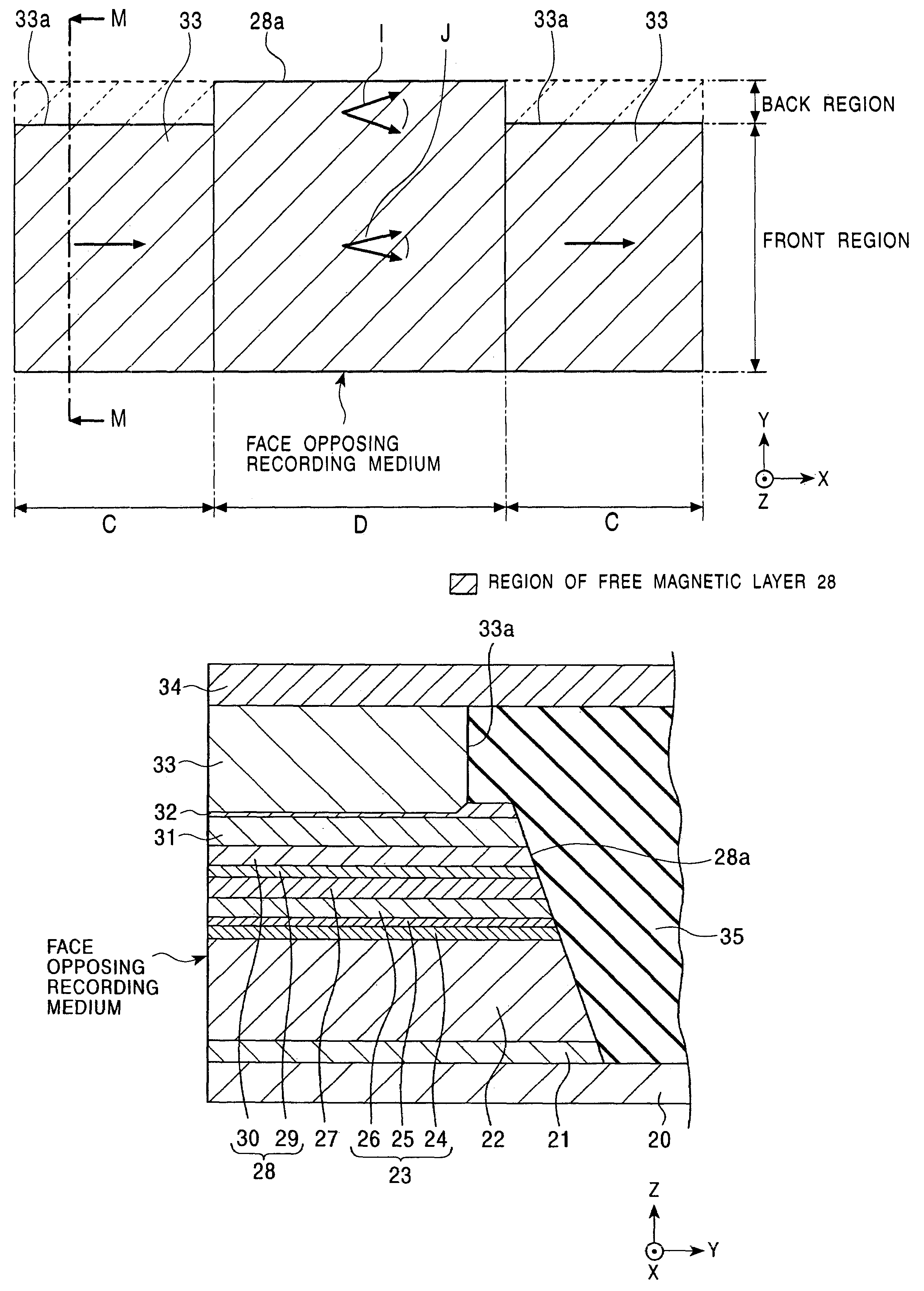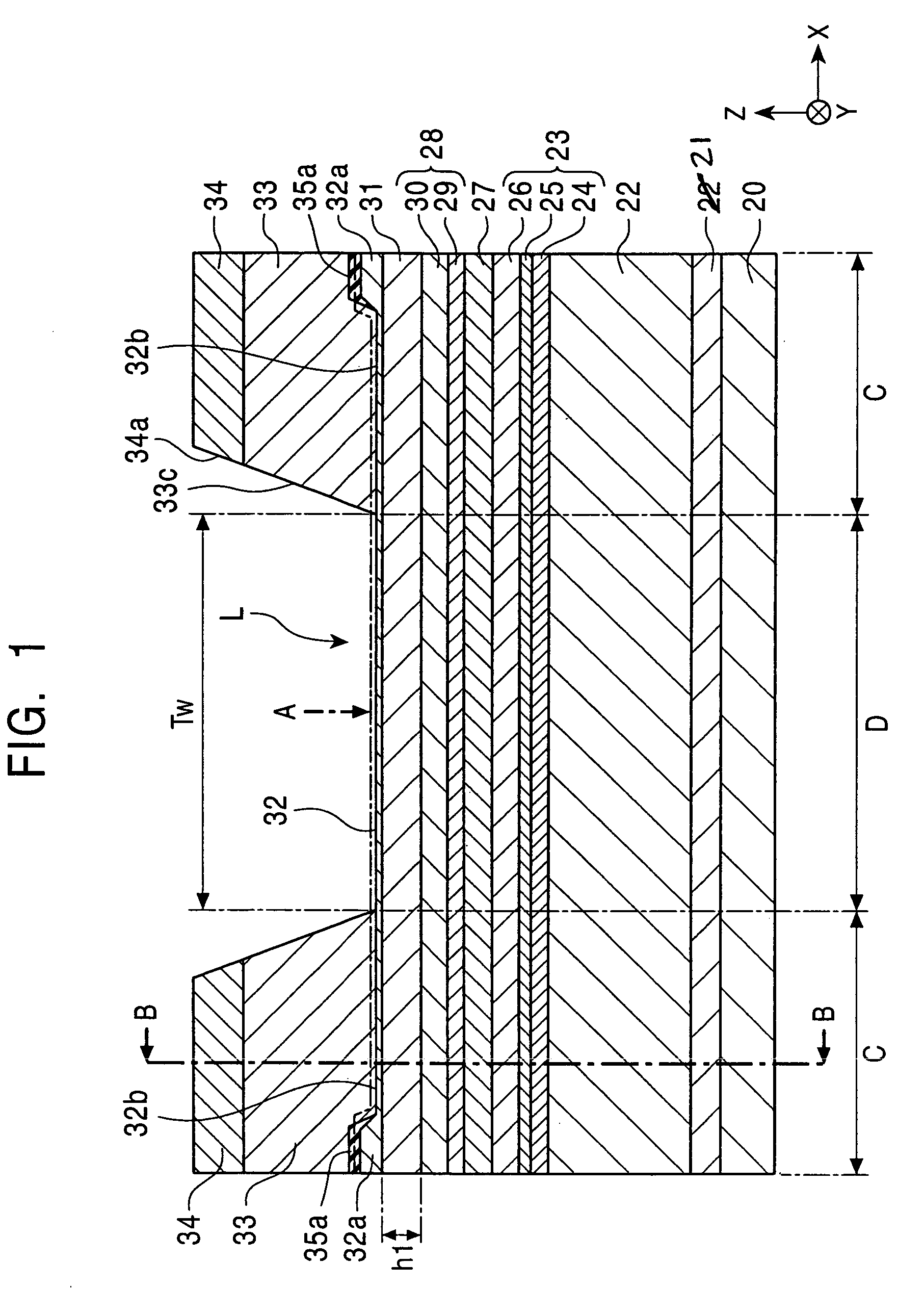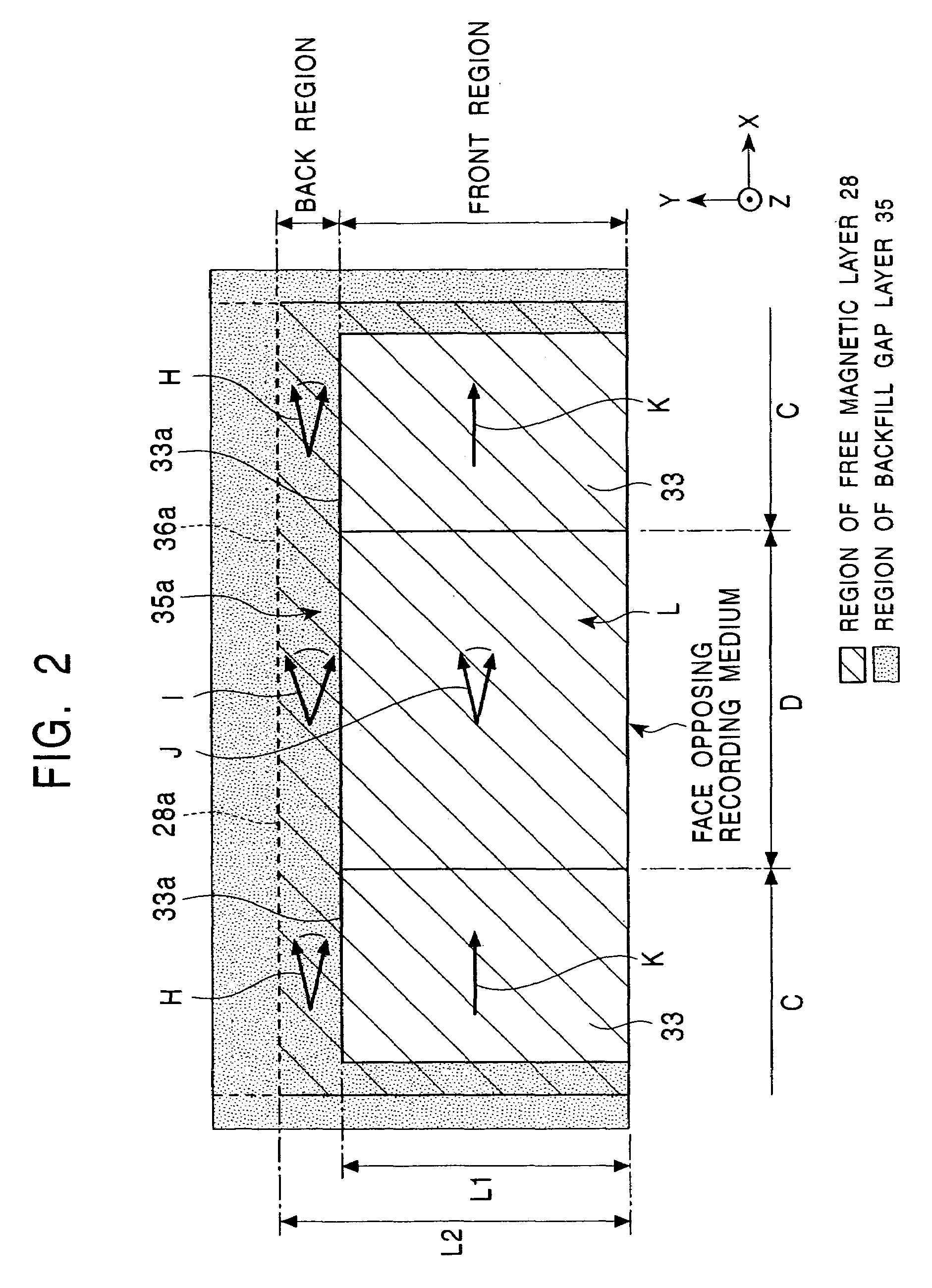Magnetic sensor with second antiferromagnetic layer having smaller depth in height direction than free layer
a technology of antiferromagnetic layer and magnetic sensor, which is applied in the field of magnetic sensors, can solve the problems of thermal fluctuation of free magnetic layer b>4/b>, disadvantageous reduction of reproduction sensitivity of free magnetic layer to an external magnetic field, and decrease of curie temperature, etc., and achieves suppressing the generation of side readings and improving reproduction sensitivity.
- Summary
- Abstract
- Description
- Claims
- Application Information
AI Technical Summary
Benefits of technology
Problems solved by technology
Method used
Image
Examples
Embodiment Construction
[0067]FIG. 1 is a partial cross-sectional view showing the structure of a magnetic sensor (spin-valve type thin film element) of the present invention, which is viewed from a face opposing a recording media.
[0068]Reference numeral 20 indicates a substrate. On the substrate 20, a seed layer 21 composed of a NiFe alloy, a NiFeCr alloy, or Cr is formed. The seed layer 21 is a film, for example, composed of 60 atomic percent of (Ni0.8Fe0.2) and 40 atomic percent of Cr and having a thickness of 60 Å.
[0069]On the seed layer 21, a first antiferromagnetic layer 22 is formed. The first antiferromagnetic layer 22 is formed of a PtMn alloy, an X—Mn alloy (where X is at least one element selected from the group consisting of Pd, Ir, Rh, Ru, Os, nickel (Ni), and iron (Fe)), or a Pt—Mn—X′ alloy (where X′ is at least one element selected from the group consisting of Pd, Ir, Rh, Ru, Au, Ag, Os, Cr, Ni, argon (Ar), neon (Ne), xenon (Xe), and krypton (Kr)).
[0070]As the first antiferromagnetic layer 2...
PUM
| Property | Measurement | Unit |
|---|---|---|
| Thickness | aaaaa | aaaaa |
| Antiferromagnetism | aaaaa | aaaaa |
| Height | aaaaa | aaaaa |
Abstract
Description
Claims
Application Information
 Login to View More
Login to View More - R&D
- Intellectual Property
- Life Sciences
- Materials
- Tech Scout
- Unparalleled Data Quality
- Higher Quality Content
- 60% Fewer Hallucinations
Browse by: Latest US Patents, China's latest patents, Technical Efficacy Thesaurus, Application Domain, Technology Topic, Popular Technical Reports.
© 2025 PatSnap. All rights reserved.Legal|Privacy policy|Modern Slavery Act Transparency Statement|Sitemap|About US| Contact US: help@patsnap.com



